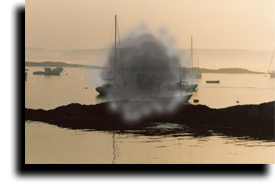Macular degeneration is one of the leading causes of blindness in adults over the age of sixty five. Because of this, it is also known as age-related macular degeneration (AMD). As part of the natural aging process, the central part of the retina, known as the macula, may begin to decline and cause blurred vision. Factors that contribute to the onset of macular degeneration include: family history, uncontrolled blood pressure and smoking.
There are two forms of macular degeneration – dry and wet macular degeneration.
Dry Age-Related Macular Degeneration
Dry (atrophic) macular degeneration is the most common type of AMD, affecting 90% of individuals with macular degeneration. In dry AMD, the layers of the macula get progressively thinner over time and begin to deteriorate. During this progression, tiny drusen – which are little spots on the macula – begin to appear on the retina. Drusens are what lead to the deterioration and atrophy of the retina. Important to note, nearly all people over the age of fifty have at least one small druse in one or both eyes. But only eyes with large drusen are at risk for age-related macular degeneration.
Dry macular degeneration can affect one or both of the eyes. Early stages of dry AMD are associated with minimal central vision loss and usually progress slowly (over years). People with dry macular degeneration in one eye may still be able to function well using the central vision from the other unaffected eye. Even in instances where dry AMD affects both eyes, there is often enough peripheral vision to continue daily activities.
Dry macular degeneration symptoms may include:
- Visual distortions
- Reduced central vision in one or both eyes
- The need for brighter light when reading
- Decreased contrast sensitivity
- Difficulty recognizing faces
- A blurry/blind spot in your field of vision
This is how an individual with dry AMD may see:

Source: American Macular Degeneration Foundation
Once dry AMD gets into advanced stages, individuals are more at risk of permanent vision loss and developing wet AMD.
Wet Age-Related Macular Degeneration
Wet AMD affects around 10% of individuals with macular degeneration and is more likely to cause a relatively sudden change in vision; resulting in serious vision loss. During this type of macular degeneration, abnormal blood vessels develop inside of the retina and leak fluid and blood into layers of the macula. This can cause scar tissue to form and retinal cells to stop functioning – which can lead to permanent scarring and may distort your vision.
Wet macular degeneration symptoms usually appear suddenly and worsen rapidly. Individuals with wet AMD may experience all dry AMD symptoms, as well as:
- Dark “spots” in their central vision
- Straight lines appearing wavy
This is how an individual with wet AMD may see:
Source: American Macular Degeneration Foundation
Early detection and treatment of wet macular degeneration may help reduce vision loss and, in some instances, recover vision loss.
Prevention
Some patients with AMD may not notice any changes to their vision; therefore, periodic eye examinations are very important for patients over the age of 50. Routine eye exams will help identify early signs of macular degeneration. Reach out today if you are interested in learning more about age-related macular degeneration or if you want to schedule an appointment with us. Dr. Pandya services the Dallas Fort Worth community with offices in both Plano and Waxahachie, Texas.


